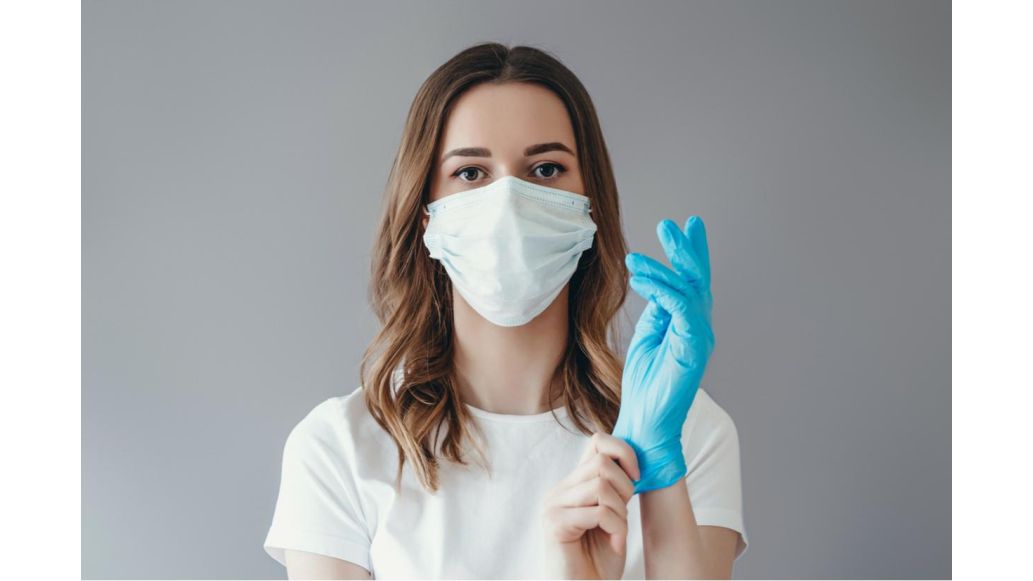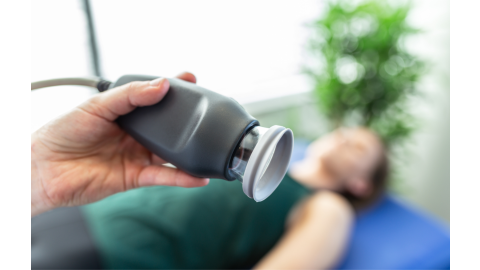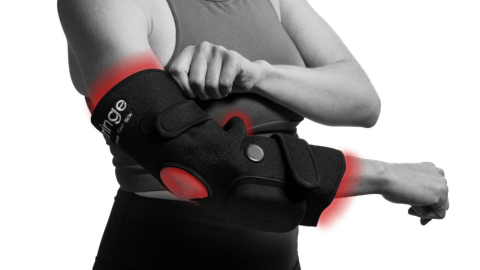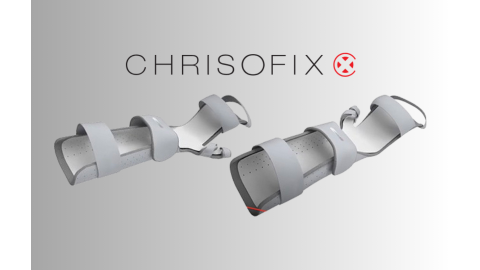As people continue to adapt to life during the COVID-19 pandemic, we’ve all learned about infection prevention measures like social distancing and mask wearing. But you may be wondering if there’s more you could do to help prevent the spread of the 2019 coronavirus.
For example, should you be wearing gloves? If so, what kind? If not, what should you do instead? Consider this guide to be Glove and Hand Hygiene 101. Get the answers to all of your glove-related questions!
- Should I wear gloves during COVID-19? Why or why not?
- Handwashing During COVID-19: A Better Alternative
- More About Gloves
- More Information About Life During COVID-19
What is COVID-19?
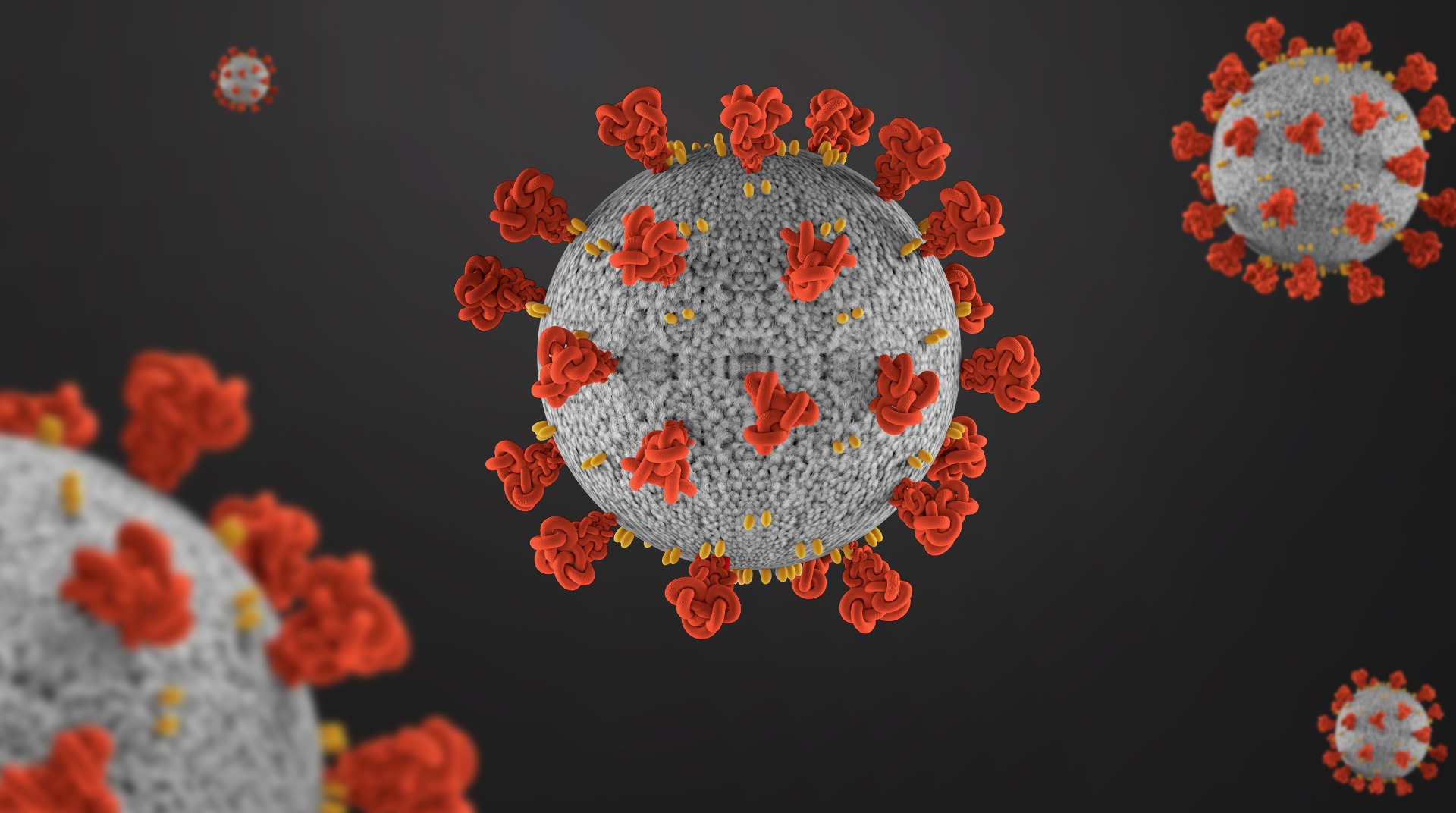
COVID-19 stands for coronavirus disease 2019. It’s a new coronavirus that has a wide range of symptoms ranging from mild symptoms to severe illness. As of mid-August 2020, the United States has had over 5.4 million cases, that’s more than the entire population of Wisconsin.1,2 There have also been more than 169,900 coronavirus deaths.1
COVID-19 symptoms include fever, chills, cough, shortness of breath/difficulty breathing, new loss of smell or taste, muscle or body aches, fatigue, headache, congestion or runny nose, sore throat, nausea or vomiting, or diarrhea.3
Should I wear gloves during COVID-19? Why or why not?
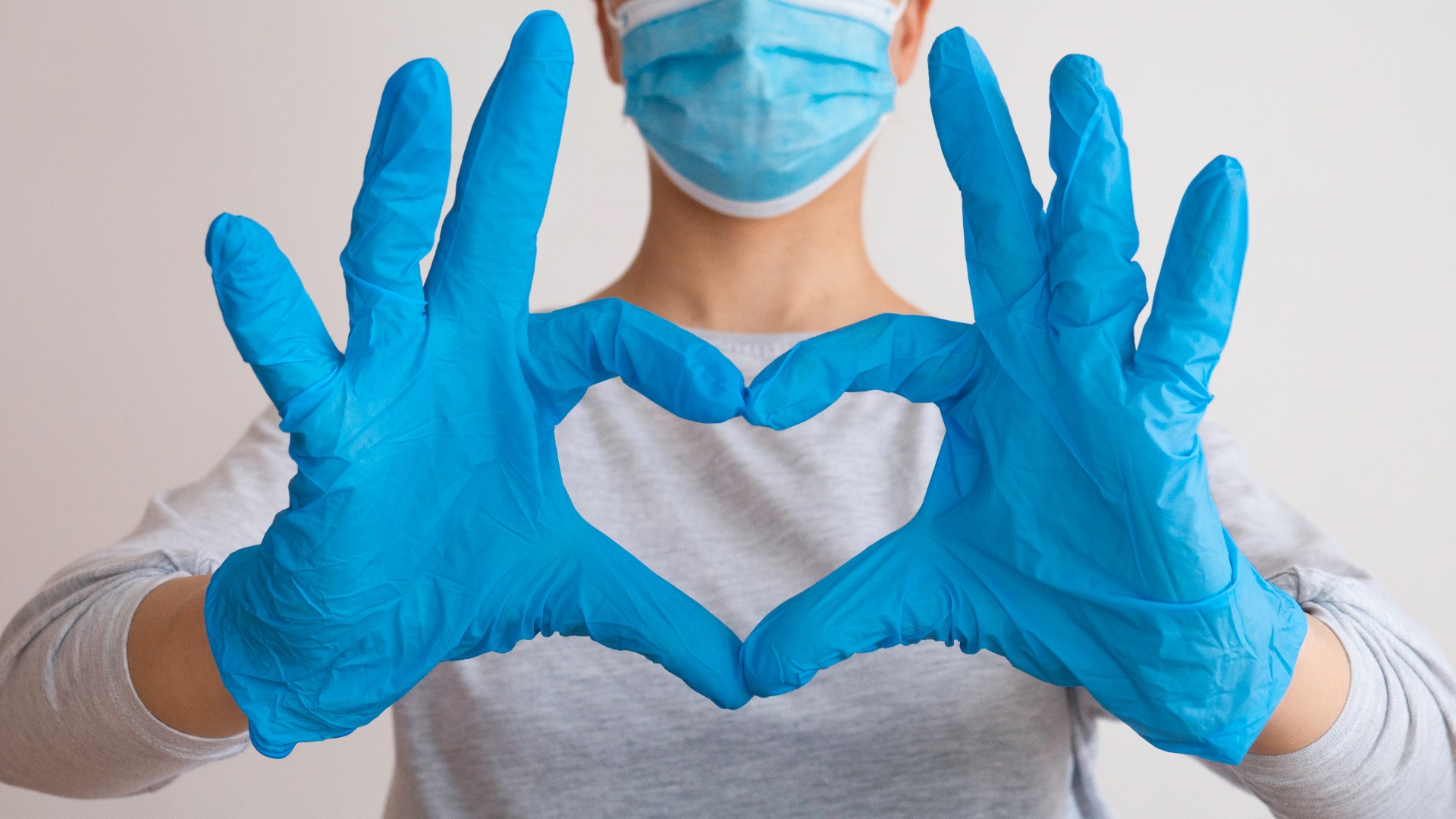
Wearing masks is an important step to help prevent the spread of COVID-19. But you might be wondering if you should also be wearing gloves, another form of personal protective equipment (PPE).
The Centers for Disease Control and Prevention (CDC) states that “wearing gloves is not necessary in most situations, like running errands. CDC recommends wearing gloves when you are cleaning or caring for someone who is sick” and “doesn’t recommend the general public use gloves. It is not a substitute for washing your hands, and if not properly removed, gloves can be a source of contamination.”.4,5
Why You Should Wear Gloves During Cleaning or Patient Care
Gloves are suggested for those circumstances to protect you from harsh cleaning chemicals or from bodily fluids (blood, saliva, vomit, etc.).4 Learn more about when to wear gloves later in this guide.
Why You Should Not Wear Gloves While Running Errands
Outside of those circumstances, the CDC doesn’t recommend wearing gloves during trips to the grocery store or when pumping gas or during other daily errands because they won’t necessarily protect you from COVID-19 and may even lead to the spread of germs.
Infectious disease specialist Alan Taege, MD says that wearing gloves in public isn’t exactly wrong, but “most people aren’t wearing or disposing of their gloves correctly, which defeats the whole purpose.”6
Wearing gloves outside of patient care isn’t always the best idea because:
- There could be a tear or rip in the gloves
- You could put them on incorrectly
- You could take them off incorrectly
- They could give you a false sense of security, leading to you touching anything you want including your face or phone with contaminated gloves, leading to self-contamination
The main problem with wearing gloves in public is the risk of contamination. You need to wash your hands so you don’t transmit the virus from your hands to your face when you touch your face. If you’re wearing gloves and your gloved hand comes in contact with the virus and then touch your face, it’s the same as touching it with your bare hand.
Handwashing During COVID-19: A Better Alternative
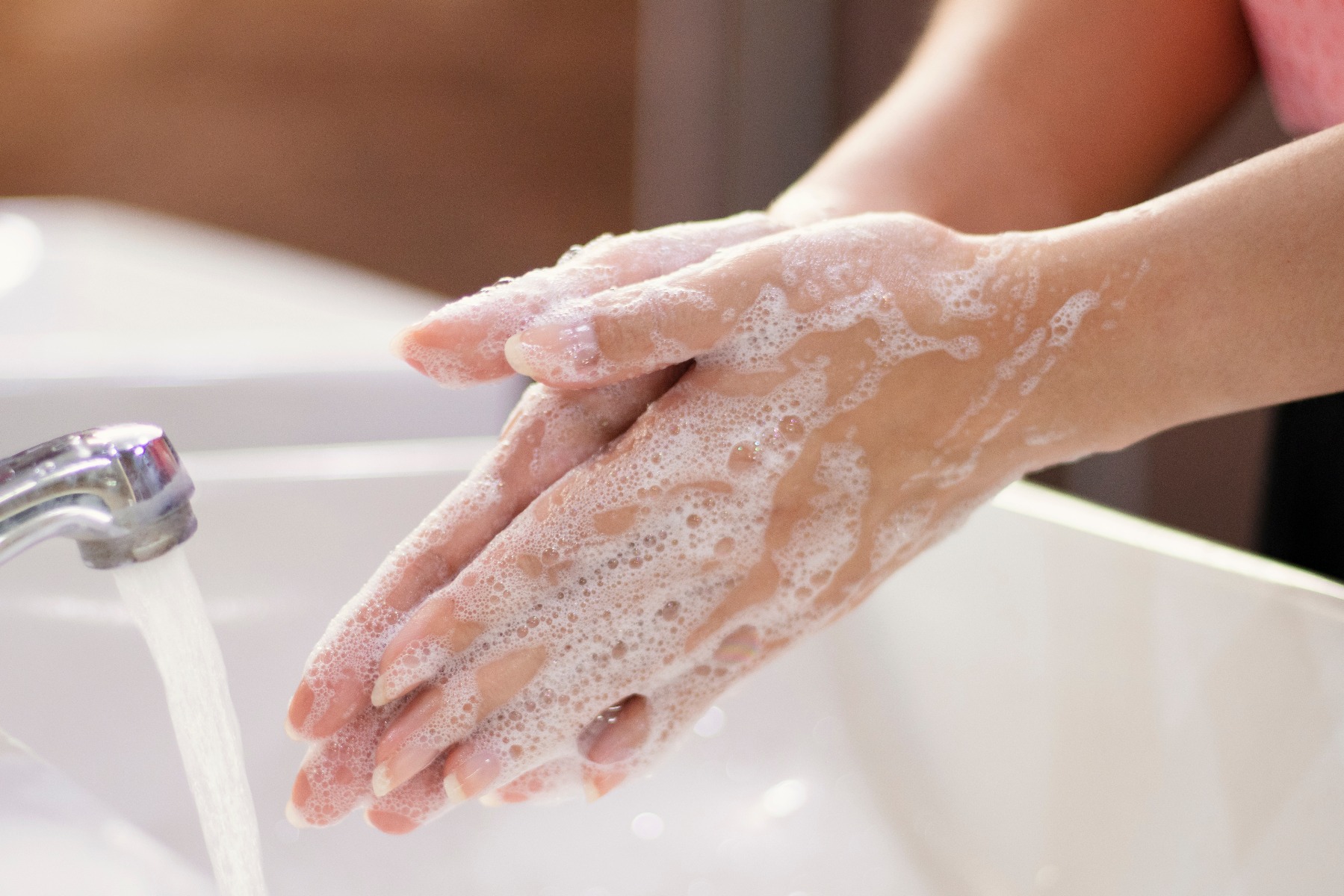
So glove-wearing isn’t usually recommended. What’s the alternative?
The CDC says that “The best protection is to wash your hands often with soap and water, put distance between yourself and others, and wear a cloth face covering when around others.”5
Learn more about the best handwashing practices.
Watch this video on frequently asked questions about handwashing to get started!
When should I wash my hands?
There are many key times when you are likely to get and spread germs. During these times, you should stop to wash your hands. This helps keep you healthy!
The CDC recommends washing your hands often including:7
- Before touching your eyes, nose, or mouth
- After you’ve been in a public place and touch something that may be frequently touched by others including door handles, electronic cash register screens, shopping carts, gas pumps, tables, etc.
- Before, during, and after preparing food
- Before eating food
- Before and after treating a cut or wound
- Before and after caring for someone who is sick
- After blowing your nose, coughing, or sneezing
- After using the toilet
- After changing diapers
- After touching garbage
- After touching an animal, animal feed, or animal waste
- After handling pet food or treats
How should I wash my hands?
When you’re relying on handwashing to help prevent you from getting COVID-19, you want to make sure you’re doing it correctly. Follow these steps!
- Wet your hands
- Apply soap
- Rub your hands together, creating a lather and scrubbing everywhere
- Wash the fronts and backs of your hands, in between your fingers, and under your fingernails for at least 20 seconds (for a timer, hum the ‘Happy Birthday’ song twice)
- Rinse your hands off with clean, running water
- Dry your hands completely using a single-use towel or hand dryer or air dry
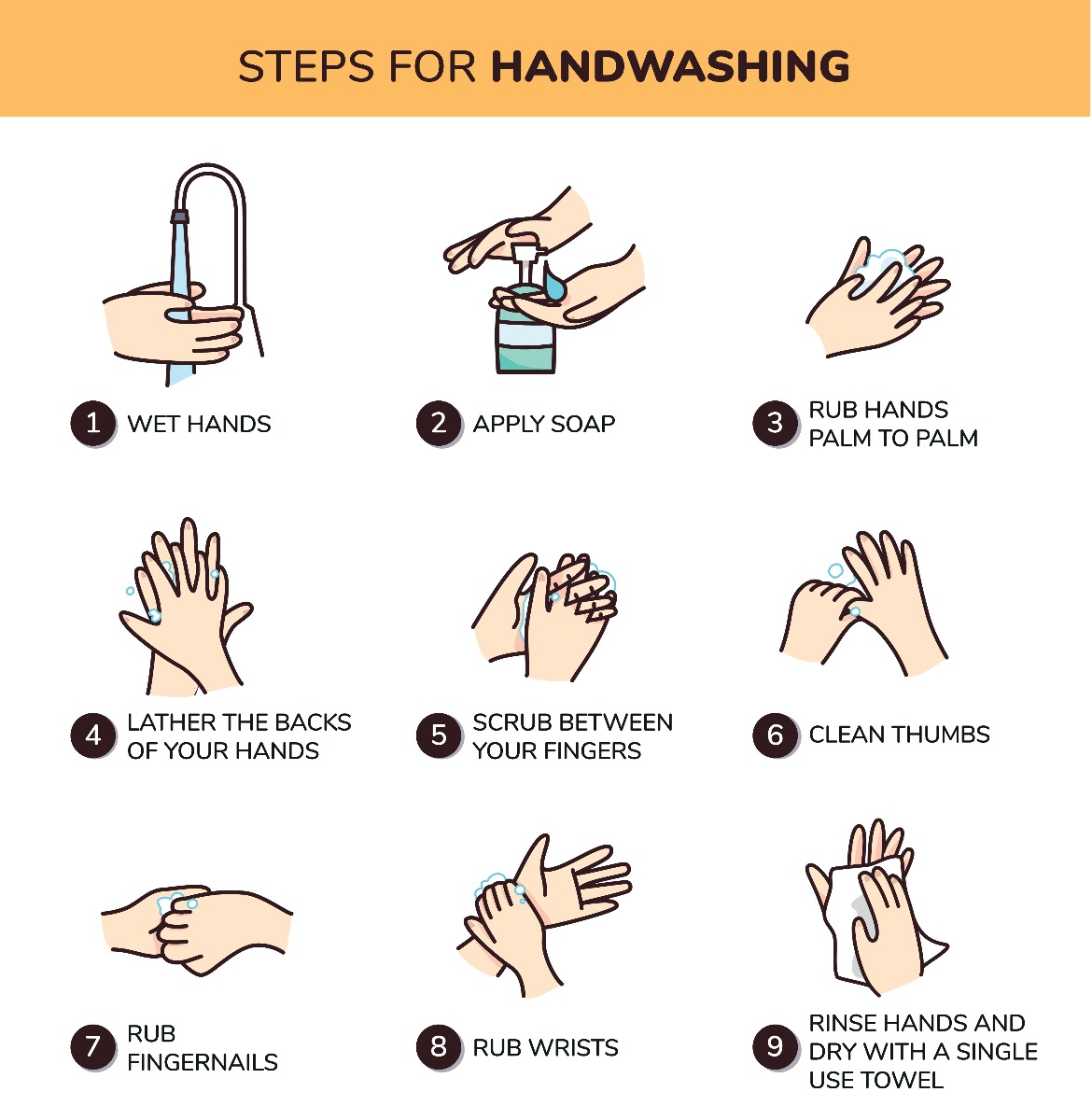
Watch this video on how to properly wash your hands!
And share this fun handwashing video with your kids!
Learn about proper handwashing in this ASL (American Sign Language) video!
If there’s no water, should I use hand sanitizer instead?
If you don’t have access to soap and water, use an alcohol-based hand sanitizer instead. The hand sanitizer should be at least 60% alcohol.7
Hand sanitizers can help reduce germs on your hands, but they don’t remove all types of germs or harmful chemicals (like pesticides and heavy metals), and may not be as effective when hands are dirty or greasy.7
When you have the opportunity, wash your hands with soap and water, even if you have already used hand sanitizer.
How to Use Hand Sanitizer7
- Apply gel hand sanitizer (at least 60% alcohol) to the palm of one hand
- Rub your hands together getting the gel all over your hands, including the palms and backs of your hands, between your fingers, and under your nails
- Rub the gel all over your hands until they are dry (around 20 seconds)
More About Gloves

When should I wear gloves?4
When you are cleaning and disinfecting your home, you should follow the instructions on the disinfectant including wearing reusable or disposable gloves. After you have removed your gloves, you should wash your hands.
If you are giving care to someone who is sick at home, you should wear disposable gloves when:
- Cleaning or disinfecting the area and surfaces around the person who is sic
- When touching or having contact with blood, stool, or bodily fluids (saliva, mucus, vomit, or urine)
After using disposable gloves, throw them out in the trash can. Do not disinfect or reuse them. After removing your gloves, wash your hands.
Watch this video to review when you should wear gloves!
How should I remove my gloves?
If you wear gloves while cleaning, caring for someone who is sick, or if you choose to wear gloves in public places, make sure you remove them properly.8
- Grasp the outside of one glove at the wrist
- Peel the glove away from your body, turning it inside out
- Hold the glove you removed in your gloved hand
- Peel off your second glove by putting your fingers inside the glove at the top of your wrist
- Turn the second glove inside out while pulling it away from your body, leaving the first glove inside the second
- Dispose of your gloves
- Wash your hands immediately after removing your gloves
Watch this video on how to correctly remove your gloves!
What kind of gloves should I wear?
There are three types of gloves that are available, each with its own properties and advantages: latex, nitrile, and vinyl. But what type of gloves should you wear?
- Latex Gloves
- Often the most popular choice for medical professionals
- Latex gloves offer a superior fit and comfort level and the increased tactile sensitivity makes the gloves a popular choice for surgeons
- They typically offer the best protection against viruses and bacteria9
- The primary reason for choosing another type of glove is if you suffer from latex allergies or latex sensitivities or work in a latex-free environment
- Nitrile Gloves
- Nitrile gloves are made of a synthetic rubber and are the most puncture resistant gloves
- They have a high level of tactile sensitivity, are usually the most resistant type of glove to many chemicals, and typically offer the next best level of protection against viruses and bacteria after latex gloves9
- Often referred to as “medical grade”
- The primary reason for choosing another type of glove is if you’re looking for slightly more economically-priced gloves
- Vinyl Gloves
- Vinyl gloves are a more popular choice for the food industry, they have a looser fit, are less durable, and are usually the most economical
- The primary reason for choosing another type of glove is if you would like a higher level of durability and protection
The best type of gloves depend on your needs and your budget, but hopefully this helps you understand the differences between the various types of gloves.
More Information About Life During COVID-19
You’ve answered all of your glove questions. Now what about masks? Find out when to wear them in this article, COVID-19 Face Masks 101: Why & How to Wear One, Types, & More.
Do you have more questions about going out for daily activities or commuting? Check out these articles, COVID-19: How to Stay Safe On Errands & When Going Out and Staying Safe While Traveling and Commuting During COVID-19.
References
- The New York Times. (August 2020). Coronavirus in the U.S.: Latest Map and Case Count. The New York Times. Retrieved from https://nyti.ms/2FoXstB
- Infoplease. (2019). State Population by Rank. Infoplease. Retrieved from https://bit.ly/2PYiaTn
- Centers for Disease Control and Prevention. (May 2020). Symptoms of Coronavirus. CDC. Retrieved from https://bit.ly/2DSETOk
- Centers for Disease Control and Prevention. (July 2020). When to Wear Gloves. CDC. Retrieved from https://bit.ly/2Yr7YYf
- Sargent, J. (April 2020). We asked the CDC whether or not you should be wearing gloves. SFGate. Retrieved from https://bit.ly/2CA2lPw
- Cleveland Clinic. (April 2020). Why You Shouldn’t Wear Gloves to the Grocery Store. Cleveland Clinic. Retrieved from https://cle.clinic/3h5c7s5
- Centers for Disease Control and Prevention. (April 2020). When and How to Wash Your Hands. CDC. Retrieved from https://bit.ly/2Yc2AYD
- Centers for Disease Control and Prevention. (n.d.). How to Remove Gloves. CDC. Retrieved from https://bit.ly/3iNMkVG
- AvaCare Medical. (n.d.). Disposable Gloves: How to Choose & Use. AvaCare Medical. Retrieved from https://bit.ly/2YaeXVi
- B4 Brands. (October 2013). Latex Vs Nitrile Vs Vinyl Gloves...Which to Choose?. B4 Brands. Retrieved from https://bit.ly/314TDlR
Medical Disclaimer: The information provided on this site, including text, graphics, images and other material, are for informational purposes only and are not intended to substitute for professional medical advice, diagnosis or treatment. Always seek the advice of your physician or other healthcare professional with any questions or concerns you may have regarding your condition.








 France
France Australia
Australia